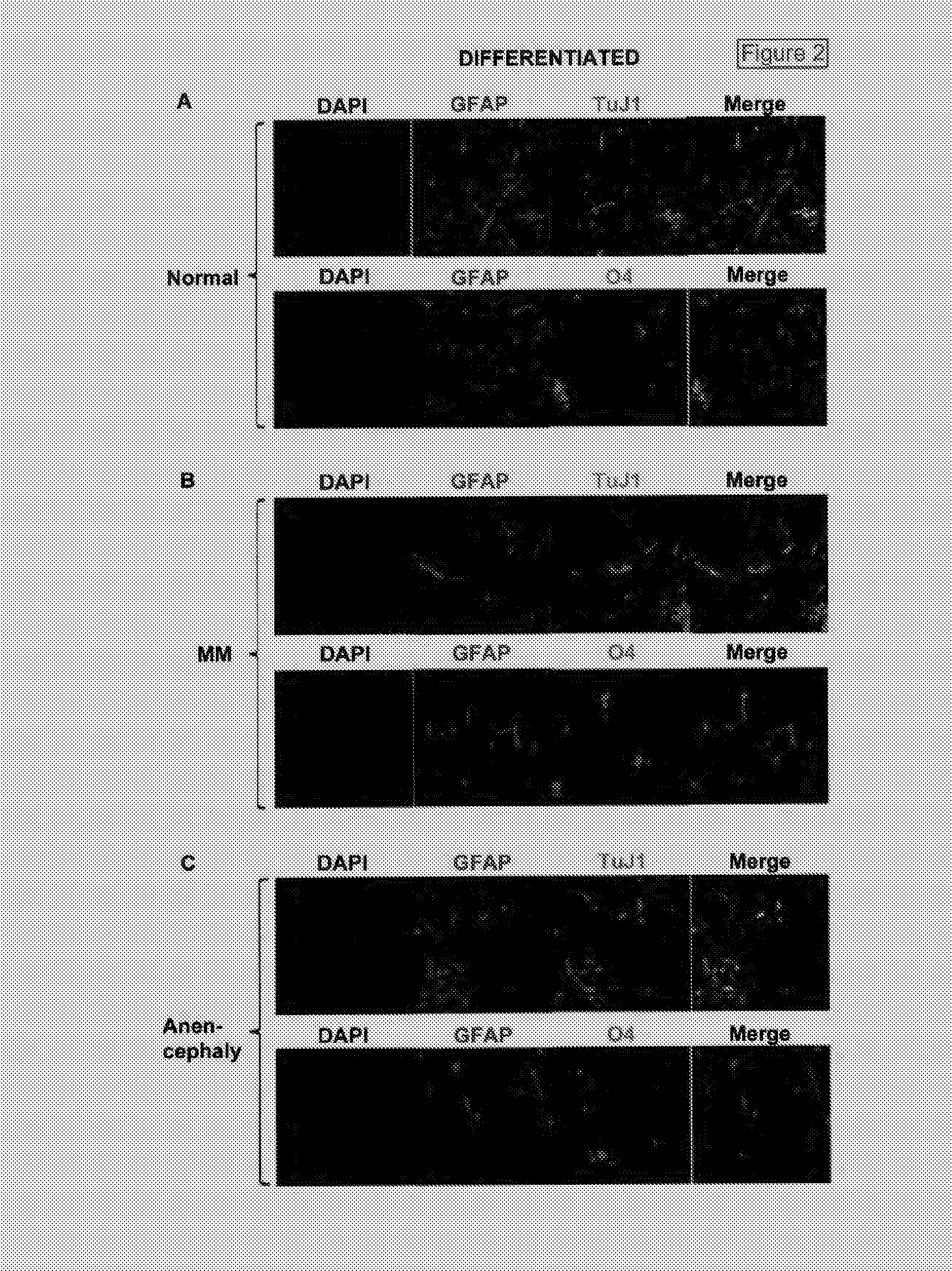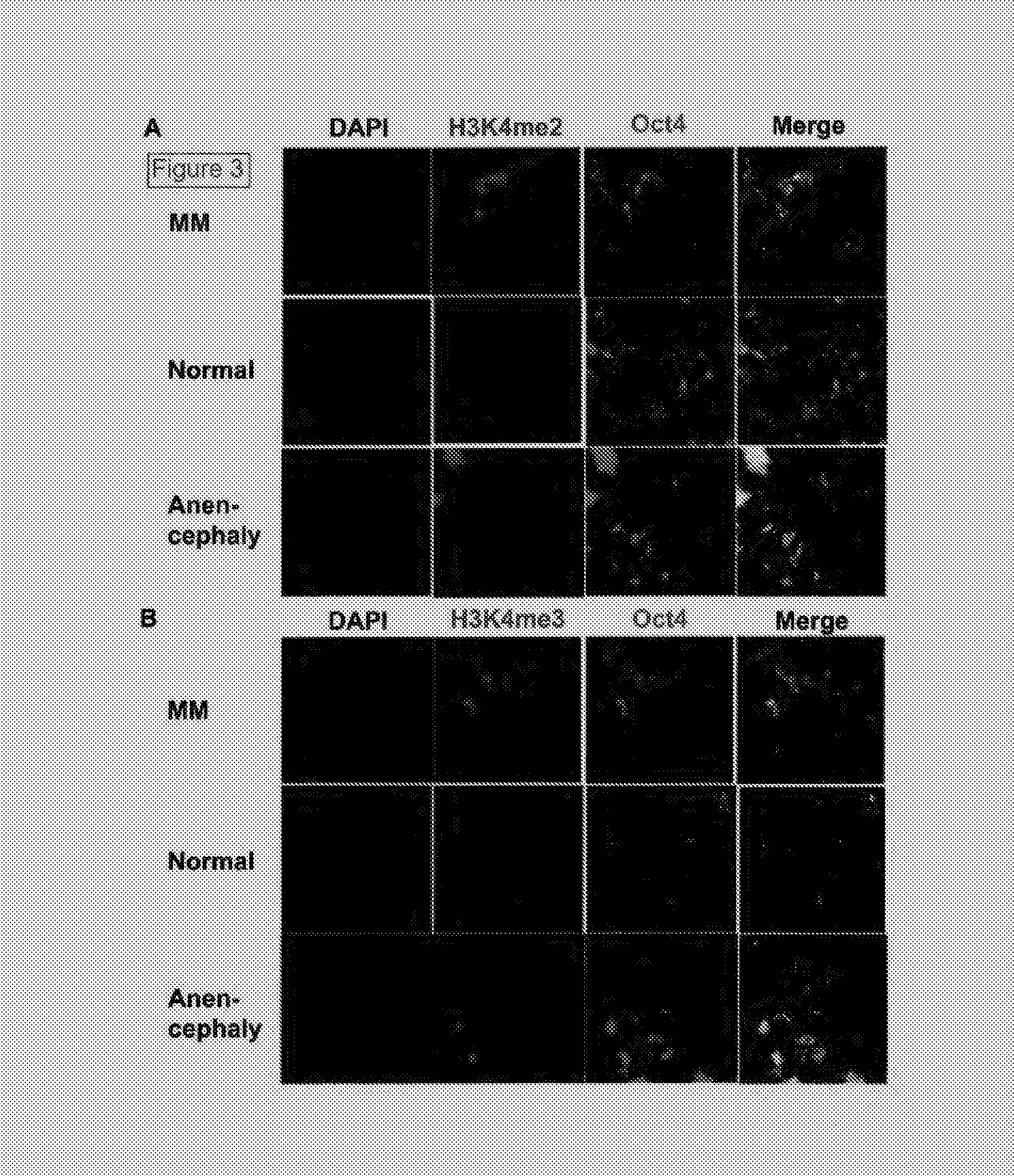Compositions and Methods of Detecting and Treating Neural Tube Defects
a neural tube defect and composition technology, applied in the field of compositions and methods for detecting and treating neural tube defects, can solve the problems of no bladder control, high morbidity, and difficult prediction of ntds, and achieve the effect of reducing the amount of noggin
- Summary
- Abstract
- Description
- Claims
- Application Information
AI Technical Summary
Benefits of technology
Problems solved by technology
Method used
Image
Examples
example 1
Collection of Human Amniotic Fluid and Serum Samples
[0039]Amniotic fluid samples were collected from six pregnant women through amniocentesis, between 16 and 18 weeks of gestation. Two samples were from women exhibiting normal pregnancies, and one each showing myelomeningocele (MM), anencephaly, encephalocele and holoprosencephaly. All women who donated amniotic fluid and blood samples signed informed consent forms (IRB approval #STU00012913; Northwestern University Feinberg School of Medicine, Chicago, Ill.).
example 2
Primary Culture of Human Amniotic Fluid Cells and Isolation of Amniotic Fluid Stem Cells (AFSCs)
[0040]Amniotic fluid samples (5 ml) were filtered using 100-μm filters, and centrifuged at 400 g (4° C.) for 10 min. Supernatant was stored for later use, precipitates were seeded in 75-mm tissue culture dishes with hAFC medium (a-MEM medium (Gibco, Invitrogen) containing 15% ES-grade FBS, 1% glutamine and 1% penicillin / streptomycin (Gibco, Invitrogen) supplemented with 18% Chang B and 2% Chang C (Irvine Scientific)), and incubated at 37° C. with 5% humidified CO2 . Non-adhering cells were removed on the fifth day after seeding. New media was added to adherent cells, which were than maintained until 65-70% confluence. Cells obtained from amniotic fluid associated with encephalocele and holoprosencephaly affected pregnancies did not survive in culture. Amniotic fluid received from these samples was slightly turbid and tinted red, it is possible that these samples were left at RT for an ext...
example 3
[0042]On day 7 individual colonies >50 μm, were selected and plated in the absence of growth factors in 8 well chamber slides pre-coated with laminin (Sigma L2020). Adherent neurospheres were fixed in 4% paraformaldehyde in PBS. CD133 (Abeam ab19898-100), Sox2 (Chemicon AB5603), Oct4 (Santa Cruz Biotechnology sc-8629), alkaline phosphatase (Millipore SCR004); and the neural progenitor marker Nestin (Millipore MAB353) were used to confirm stem cell characteristics. Immunostaining was done as described by Ichi et al. (Ichi, et al. J. Biol. Chem 285: 36922-36932 2010). Antibodies for epigenetic markers included: H3K4me2 (ab8580), H3K4me3 (ab7766), H3K27me2 (ab24684) and KDM6B (rabbit polyclonalab38113), from Abeam; H3K27me3 (rabbit polyclonal #07-449) from Upstate; H3K9ac (rabbit poly-CS#9671S) and H3K18ac (rabbit poly-CS#9675S) from Cell Signaling); and GcnS (goat polyclonal—sc6303) from Santa Cruz. Prior to treatment with primary antibodies cells were blocked with 10% n...
PUM
| Property | Measurement | Unit |
|---|---|---|
| composition | aaaaa | aaaaa |
| compositions | aaaaa | aaaaa |
| color | aaaaa | aaaaa |
Abstract
Description
Claims
Application Information
 Login to View More
Login to View More - R&D
- Intellectual Property
- Life Sciences
- Materials
- Tech Scout
- Unparalleled Data Quality
- Higher Quality Content
- 60% Fewer Hallucinations
Browse by: Latest US Patents, China's latest patents, Technical Efficacy Thesaurus, Application Domain, Technology Topic, Popular Technical Reports.
© 2025 PatSnap. All rights reserved.Legal|Privacy policy|Modern Slavery Act Transparency Statement|Sitemap|About US| Contact US: help@patsnap.com



